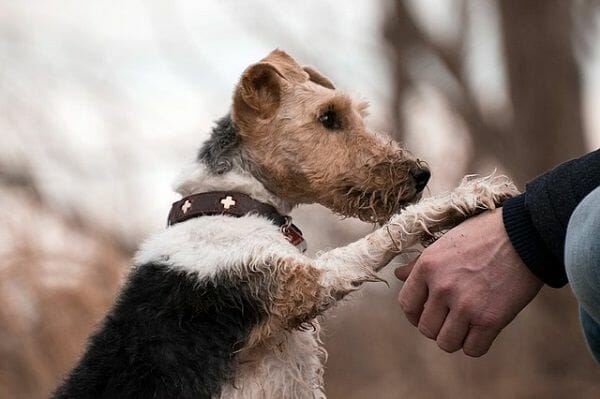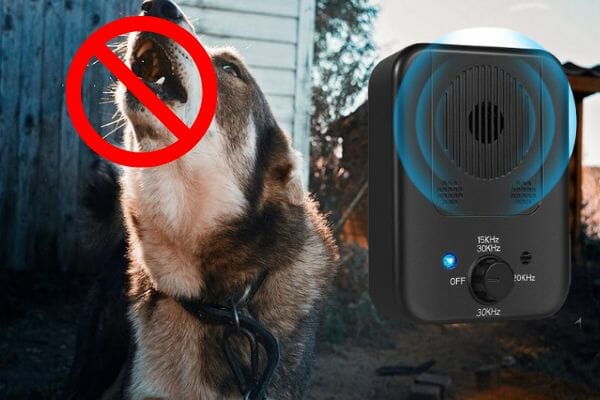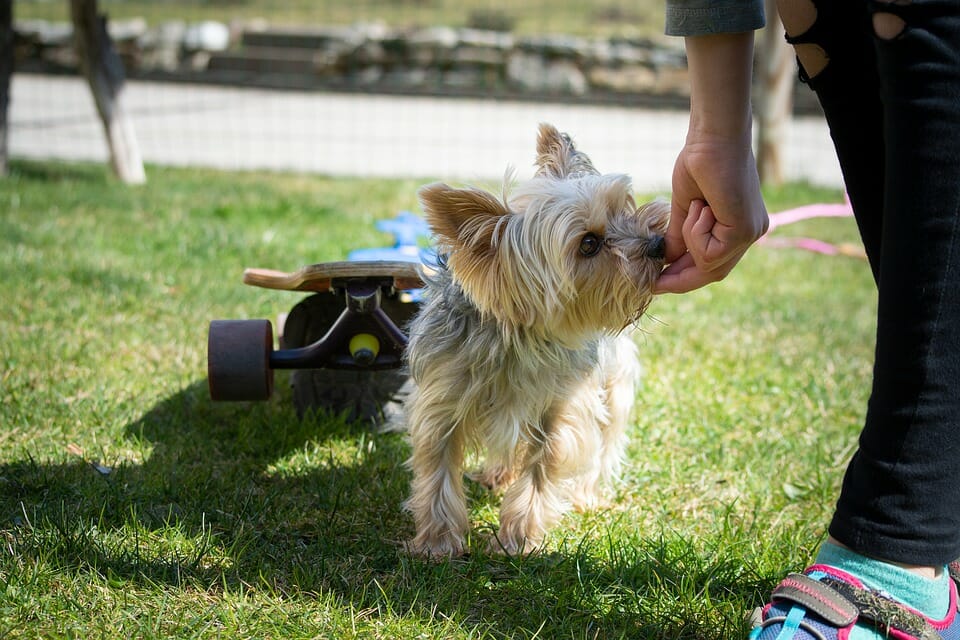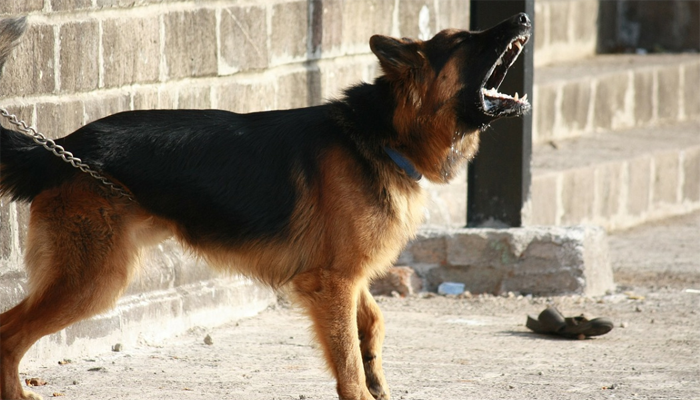How to Stop a Dog from Barking?
Barking is an instinctive behavior for dogs. Often, it’s not about eliminating the barking but instead, decreasing it.
Finding out why your fur child is barking is an excellent way to solve this issue. In their minds, they have a good reason to be barking. It could come as quickly to them as laughing is to you.
Dogs usually bark at things they can see, hear, smell or feel. So basically, they bark at everything. You can try to curb this behavior by limiting what they pick up with their senses, but that would be a full-time job.
If your pooch is barking at nothing, it’s most likely because your pup is bored. Some mental stimulation like a dog puzzle could quickly solve this problem.

A lot of the time a dog barks because he wants love from mommy and daddy! Dogs are active creatures and need their daily dose of exercise, both physical and mental. Make sure you give your dog plenty of exercise.
We are going to help you figure out why your dog is barking, and find the best way to calm them down. Dogs are like babies; you have to have patience.
Table of Contents
Dogs Bark When They Want Something

When dogs that bark when they want something, this is known as ‘demand barking.’ Scenarios in which this can happen are when your dog is hungry, wants to go out, needs to go potty, etc.
According to vets, different types of barking can have different cadences. With demand barking, the barks are shorter, usually coming in a single bark or a few quick ones. That sounds about right; if you imagine it, it does sound demanding. Your dog will also pause and look at you intently, or look at what he/she wants.
I know what you are asking, ‘should I reward this behavior with my attention?’ The answer is quite amusing.
Since dogs are so much like little children, if you acknowledge their demands, it could reinforce and encourage this behavior in the future. The best way is to ignore it, for however long you can without giving in, or getting up and walking away.
For those of you who have a soft spot for your furbaby, which is all of us, give in to their desires one or two barks in. The longer you wait, the more it will show your dog if he ‘whines’ for something long enough, he will get it.
Dogs Bark When Something Catches Their Attention
Such instances include your phone ringing, someone knocking at the door, or a baby crying next door. These situations are entirely out of your control. What you can control, however, is how long it lasts.
The critical thing to remember is not to yell at your dog. Your ‘no!’ is actually ‘keep going, this is fun!’ to the pup.
What you should do is divert pup’s attention. Hug him and talk, let your dog go out into the yard for a bit, or give him his favorite toy. Giving them something to chew on works wonders.
Dogs Bark When They Feel Something
Oh, the feels. Anxiety, excitement, and joy are all emotions that your dog wants to express through barking.
When a dog is barking out of fear or anxiety, please do not yell at them. Dogs are in a vulnerable place and need your comfort and love. Anxious barking is often mistaken as aggression. This is due to the lunging and their overall body language. Comfort your fur baby and tell him it’s okay.
When your fur baby is doing something he/she loves, they will most likely bark. When you come home from a long day, or it’s a sunny day, and your pooch is off leash at a dog park he will most likely bark out of excitement.
It’s best not to deter this type of barking. Let your fur baby be happy and express himself!
Attention Seeking

It’s all about the context to know how to stop the barking. If your baby wants your attention, give him some! Showing our dog love builds and strengthens our bonds with them. Albeit some dogs are needier than others, I will admit.
Something to remember is not to yell at your dog to be quiet. As we’ve mentioned before, this will be significantly misconstrued, and the barking will continue.
Training should be a positive motivation, not fear-inducing. Remember, they need lots of patience to learn and understand, so be consistent with your methods.
Now we are going to get into some training approaches that won’t necessarily stop the barking, but will hopefully reduce it significantly.
1. For territorial barking or barking caused by the stimulus, merely remove the motivation. Either take your dog or whatever is causing him to bark out of the equation.
2. Ignore. Ignore your dog’s barking for however long it takes. Do not give him any attention at all during this time. Your attention is considered a reward. Only acknowledge his existence again AFTER he stops.
3. Desensitize your dog to stimuli. This takes a lot of training and time. If your dog loves to bark when your friend visits, ask that friend to help, start with your friend at a distance and when she comes into view, start giving your pup treats or other positive reinforcements. Stop feeding as soon as your friend disappears again. Continue this process for however long it takes.
4. Teaching your dog to bark on command. This is done with treats and positive reinforcement. First teach them how to bark on command, then introduce the ‘quiet’ command.
5. A surefire way is to keep your dog tired. With enough mental and physical exercise, your dog will less likely feel bored or frustrated or need your attention.
What Devices Should We Use?

After sharing a few ways to train your dog to stop barking manually, we are now going to introduce in more detail what devices can be helpful.
Ultrasonic Bark Deterrent Devices
These ultrasonic bark control devices work by emitting a sound that dogs find unpleasant. The sound is ultrasonic and shocks them out of barking. It causes no physical pain and is more welcomed than the shock collar.
There is no way to know how your dog will respond until you try it. Some pups aren’t sensitive at all to the sound, and some are much too sensitive.
Citronella Spray Collar
Much like the above option but instead, this spray collar sends a burst of citronella right into your dog’s face. As mentioned before, some dogs are quick enough to escape the spray, but not the stench. It’s mostly very useful. The taste and scent of citronella are repulsive to your dog. However, there is the odd case where a dog is okay with it.
Stress Reducing/Calming Collars/Treatment
Have you heard of weighted blankets and essential oils? These are things some people use to calm and center themselves. There is a similar item for dogs that serve this purpose. These collars are filled with pheromones, herbs, and essential oils that are clinically proven to reduce fear and anxiety.
This nifty idea also comes in the form of a diffuser. Plug it in, and the pheromones will waft from the machine and calm your dog and reduce barking.
Pressure Wraps
Like a weighted blanket, these wraps are used for comfort and security. For an anxious doggy, they apply pressure to their bodies, which helps to calm them. Just like all the other devices we have introduced, this wrap might not have any effect on your pup.
White Noise Machine
Some of us might need a white noise machine to help us fall asleep at night. This machine also provides dogs that bark when they are alarmed or territorial with a sound that might drown out all the other triggering noises.
Reward Your Pup

When you have found a device that your dog responds well to, begin with the training, once your pup has taken to it, remember to reward them whenever they don’t respond to their usual triggers.
You have a lot to do with the way your dog behaves. Barking can become a learned behavior. For dog parents who reward unnecessary barking with attention and treats, your dog will learn that barking will get him his way. Barking shouldn’t be rewarded, it’s the non-barking that should be.
Conclusion
Bark control is a controversial topic. Many dog owners believe we should let dogs be dogs, and dogs naturally bark. For now, there is no known way to encourage your dog to bark at some noises, like an intruder, and discourage them from barking at others, like someone ringing the doorbell.
We strongly suggest training and positive reinforcement when it comes to bark control. One procedure we advise against would be debarking.
This is a surgical procedure that can only be defined as inhumane and cruel. It removes muscles on either side of your dog’s voice box, leaving your dog unable to emit a full bark. Just like any surgery, it comes with risks and complications as well as side effects.
Dogs should be allowed to express themselves at will. If there is a good enough reason to discourage them from this behavior, training and positive reinforcement are the way to go.
Expert Tip
Dogs who suffer from genetic disorders or are physically challenged might bark when they need help. In more severe cases, pups with cognitive issues or even brain diseases could bark excessively.
If this is the case, we implore you not to use a bark control collar. If you are often unclear as to why your canine is barking, a vet checkup should be your next step.
Did You Know?
A dog in fear could lead to hopeless situations. With some of these bark collars and bark control devices, you instill fear in your pup rather than correct ‘unwanted’ behavior. These devices can







